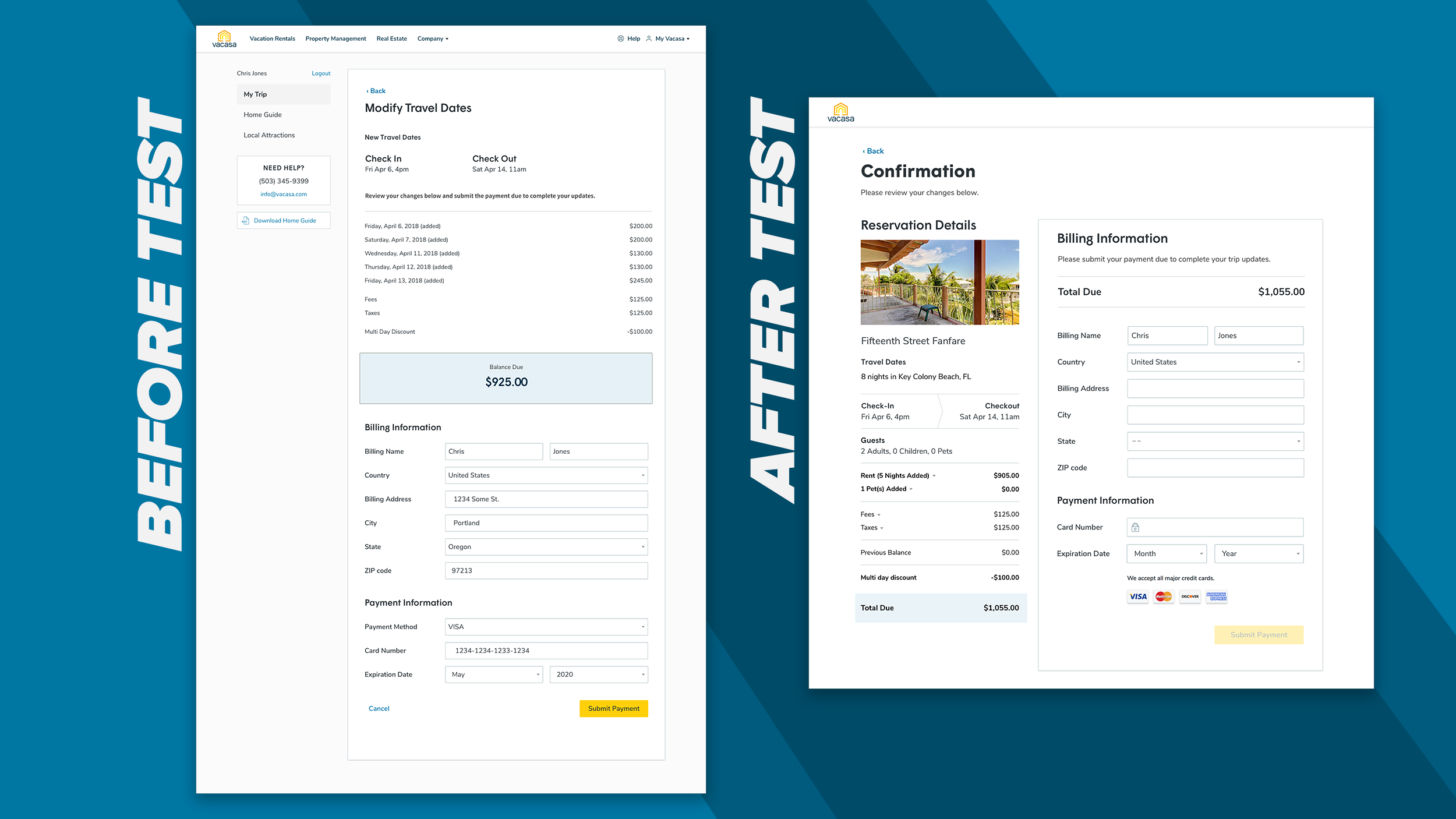Vacasa
Trip Manager Self Serve
The goal was to add self-serve functionality to the guest Trip Manager for less reliance on customer service and decrease CX calls.
In 2018 at Vacasa, I was embedded as the Lead Product Designer on a product team for Trip Manager, where guests are able to manage their trips post-booking. The problem was it still took our CX representatives to complete most tasks for our guests.
The goals for this project were to create self-service capabilities to allow customers to (1.) modify guests on their upcoming trip and (2.) modify travel dates in Trip Manager as well. Out of scope was any redesign to the current state of Trip Manager. The overall goal was to decrease calls to our CX team, lowering their overhead costs. They helped over 46,000 guests with modifications to their reservations at an estimated cost to support of $1 million (June 2017-June 2018).
The overall goal was to decrease calls to our CX team, lowering their overhead costs. They helped over 46,000 guests with modifications to their reservations at an estimated cost to support of $1 million per year.
Understand
I had recently run several whiteboard sessions with the UX team to explore our guests’ mind set in the various phases of their journey. I used this documentation as a starting point for this project. After completing an audience and competitive research – I created a site map of the current state of the Trip Manager. Next I built out the user flows for Trip Manager.
After defining the current user flows, I built a new site map and user flows addressing the features we wanted to build next. These following screens represent part of the user flow of Self-Serve for adding trip dates.
Design
After some initial brainstorming and sketching, I started working in Sketch, building out the designs. The calendar had some interesting challenges and by collaborating with the dev lead – we were able to push a new design that allowed us to focus on a 30 day window – allowing for a clear and simple system for users to modify their travel dates.
Prototype + Test
With the designs ready, I then built out comprehensive prototypes of the interaction models. I used these to set up and run in-person and remote user tests for modifying self serve and adding trip dates via Lookback to gather initial user feedback.
While the test showed that our new calendar design was intuitive to users, it also did reveal that the confirmation page user interface I had designed had a price total card that was mistaken as a button by several users. This led to a pivot in the way the confirmation page was designed before it when into development.
Confirmation page changes from user testing.
Evaluate
The project was delivered and launched.
After being live for a few months, Trip Manager was generating $100k per day on average, while significantly reducing calls to customer service.









